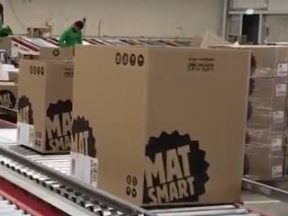Small to midsize ecommerce companies often struggle with order fulfillment. Given the costs of running a warehouse and fulfillment center, many SMBs outsource those tasks, but that could change as robots become viable for even smaller companies.
Warehouse Automation
Warehouse automation has existed for years and continues to expand. According to a February 2024 Gartner report titled “Avoid These Pitfalls in Large-Scale Warehouse Automations,” the industry will generate about $21.8 billion in worldwide revenue in 2024 and reach an estimated $71.0 billion by 2032.
Much of the industry’s revenue and growth comes from large retailers and logistics businesses. This focus on huge companies has generally put warehouse automation out of reach for SMBs for at least two reasons.
First, warehouse systems — particularly robotic ones — are too large and complex for non-enterprise companies. A business that doesn’t completely understand the nuance of pick-and-pack software, technology infrastructure, robots, and services can easily waste truckloads of money on systems that prove inadequate or overblown.
Second, an automated, robotic pick-and-pack warehouse solution is expensive. Think millions or tens of millions of dollars. Investing in the automation doesn’t make sense until a business has scale and volume.
Hence ecommerce SMBs typically run small, manual shipping operations or scale with the help of a fulfillment service and its warehouse automation and shipping facilities. The fulfillment vendor invests in the technology, and its many customers benefit.
The choice boils down to a business calculation: pay the fulfillment service or incur the cost of doing it in-house.
Affordable Robots?
There could soon be another option for SMBs — or at least mid-sized merchants.
Warehouse automation companies such as BionicHive, Dexterity Inc., Prime Robotics, and Pio have started to aim products and services at ecommerce SMBs in an apparent effort to reach emerging sellers.
For example, BionicHive makes a two-foot-wide, 100-pound robot that runs through aisles and along existing warehouse shelves, picking orders unaided. The robot, called sqUID, is suitable for large and, potentially, mid-sized merchants.
Meanwhile, Pio’s P100 cube — “essentially a high-speed vending machine” that stores and picks products efficiently — starts at $101,999 as of May 2024 for a 14-foot, 620-bin setup with two picking robots plus a $2,997 monthly fee. Upgrade to three robots, and the monthly subscription is $3,996.
Each of the Pio robots can pick about 120 items per hour. The system is “plug-and-play,” meaning merchants don’t need a separate warehouse management system. It will work alongside existing manual fulfillment operations, occupying as little as 500 square feet.

As seen in this rendering, the Pio P100 is a compact cube filled with storage bins, each capable of holding, for example, about 120 t-shirts.
Potential Benefit
The warehouse automation industry remains focused on massive companies, but the nascent trend toward ecommerce SMBs could offer growing brands more fulfillment options.
The question will be whether small-scale warehouse automation systems and robotics save ecommerce companies money and otherwise offer a competitive advantage.
Pio, which is based on large-scale warehouse technology from AutoStore, had five cube-and-robot installations at the time of writing: Privada Cigar Club, Sunday Swagger (apparel), Souko (fulfillment), Barnes 4WD (auto parts), and AI Stone (apparel).
The performance of these brands could foretell ecommerce fulfillment in general.




